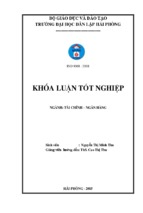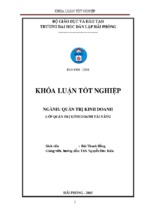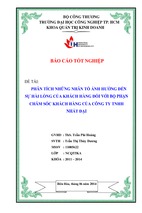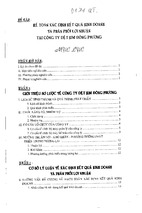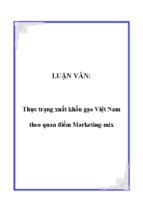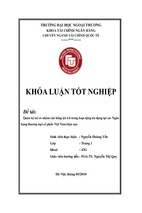How to Replace Yourself…page 51
How to Use a Coach…page 82
www.hbr.org
November 2004
Now What?
…page 60
60 Getting Past Yes: Negotiating as if
Implementation Mattered
Danny Ertel
70 Bringing Customers into the Boardroom
Gail J. McGovern et al.
82 The Wild West of Executive Coaching
Stratford Sherman and Alyssa Freas
94 The 21st-Century Supply Chain
HBR
Spotlight
[ Part 2 of 3 ]
94 Aligning Incentives in Supply Chains
V.G. Narayanan and Ananth Raman
104 Rapid-Fire Fulfillment
Kasra Ferdows, Michael A. Lewis, and
Jose A.D. Machuca
18 Forethought
35 HBR Case Study
Take the Money – or Run?
John W. Mullins
51 First Person
The CEO’s Real Legacy
Kenneth W. Freeman
118 Best Practice
CRM Done Right
Darrell K. Rigby and Dianne Ledingham
131 Tool Kit
Time-Driven Activity-Based Costing
Robert S. Kaplan and Steven R. Anderson
146 Executive Summaries
152 Panel Discussion
TLFeBOOK
TLFeBOOK
TLFeBOOK
TLFeBOOK
TLFeBOOK
HBR
60
Features
82
November 2004
60 Getting Past Yes: Negotiating
as if Implementation Mattered
70
Danny Ertel
Why do so many deals that look good on paper end up
in tatters? Negotiators are often so focused on doing
whatever’s necessary to close a deal that they pay little
attention to how – or if – the parties can actually make
the agreement work.
70 Bringing Customers into the Boardroom
Gail J. McGovern, David Court, John A. Quelch,
and Blair Crawford
Most boards lack a clear understanding of how well their
marketing functions support their strategies for top-line
growth. Here’s a simple set of tools boards can use to ensure that marketing is effectively aligned with strategy.
HBR
Spotlight
The
21st-Century Supply Chain
[Part 2 of 3]
82 The Wild West of Executive Coaching
Stratford Sherman and Alyssa Freas
94 Aligning Incentives in Supply Chains
Bad executive coaching is widely available, wastes lots
of money, and can even do harm. Good coaching, on the
other hand, produces clear business results by recognizing that there are three key parties in any good coaching
relationship: the coach, the coachee, and the client who
pays the bills.
V.G. Narayanan and Ananth Raman
A supply chain works well only if companies’ incentives
are aligned – that is, if the risks, costs, and rewards of
doing business are distributed fairly across the network.
Otherwise, the network is flirting with disaster: excess
inventory, stock-outs, incorrect forecasts, inadequate
sales efforts, and poor customer service.
104 Rapid-Fire Fulfillment
104
Kasra Ferdows, Michael A. Lewis,
and Jose A.D. Machuca
To maximize your entire supply chain, you may have to
make some pretty counterintuitive moves – like sending
trucks away from the warehouse half empty or running
factories only during the day shift. Find out why such
penny-foolish tactics add up to a pound-wise strategy.
continued on page 8
COVER ART: ERIK SANDBERG
94
6
TLFeBOOK
harvard business review
TLFeBOOK
HBR
D e pa r t m e n t s
November 2004
10
FROM THE EDITOR
Bound to Fail, or Set Up
to Succeed?
18
92
S T R AT E G I C H U M O R
118
BEST PRACTICE
CRM Done Right
The highest measure of leadership
is that it creates circumstances under
which great things happen without
heroics. Much of the art of good management lies in designing systems and
incentives in such a way that people will
naturally do the right things.
18
Darrell K. Rigby and
Dianne Ledingham
Customer relationship management
systems don’t have to be technological
black holes into which organizations
throw money. There’s a smart way to
approach CRM that delivers competitive
advantage.
FORETHOUGHT
Give consumers control of their purchasing data…Big ideas from small
countries…It’s easy to misjudge decisions…Less leadership, please…Not
all U.S. manufacturing is headed offshore…Young employees itching to
stay put…New patent laws inhibit
innovation…An antidiscrimination
law makes life worse for workers…Why
companies should care about national
security…Secrets of a successful joint
venture…What’s in a brand name?…
Managers, polish your silver and host
an innovation party.
35
35
131
Time-Driven Activity-Based
Costing
Robert S. Kaplan and
Steven R. Anderson
Traditional activity-based costing takes
too long to implement, is expensive to
build and maintain, and is badly suited
to the complexity of most businesses’
operations. A new scalable approach
provides meaningful cost and profitability information, quickly and
inexpensively.
51
HBR CASE STUDY
141
Take the Money – or Run?
John W. Mullins
8
LETTERS TO THE EDITOR
The best way for an organization to
transfer “deep smarts” is to have backup
people work side by side with experts
and go through the fundamentals,
almost from scratch.
Everything’s going well for start-up
Petrolink until a venture capital firm
makes an unapproved change to the contract. Even if the deal still looks promising, will the fledgling company later
regret doing business with the firm?
51
TOOL KIT
118
FIRST PERSON
146
EXECUTIVE SUMMARIES
152
PA N E L D I S C U S S I O N
The CEO’s Real Legacy
Go and Look
Kenneth W. Freeman
Don Moyer
Most chief executives are loath to give
up the power, perks, and prestige that
come with the job. Here’s the story of an
incumbent CEO who set ego aside to
actively manage the process of finding
and grooming a successor – and helped
strengthen his company along the way.
It’s tempting for executives to let others
tell them what’s going on outside the
workplace. But the only way they’ll know
the truth is to see it for themselves.
131
TLFeBOOK
harvard business review
SUPPLY CHAINS. SYNCHRONIZED.
UPS can help you shorten your
supply chain. For a technical
explanation, see figures A. and B.
At UPS Supply Chain Solutions ,
we have the full range of expertise
to help you turn your supply chain
into a strategic asset.
SM
Supply Chain Design and
Planning
We’ll help you take a critical
look at your current supply chain.
Then work with you to design a
more effective model. One that
makes better use of your
resources, and ultimately gets
your inventory to market faster.
Logistics and Distribution
Services
We can help improve your
global distribution process by
finding better ways to handle
materials sourcing, order fulfillment, and even final delivery
compliance. We’ll also make
sure your reverse logistics are
working just as efficiently.
Transportation and Freight
Whether you’re shipping ocean,
air, road or rail, our network
can handle it all. We combine
freight services with customs
brokerage and warehousing.
And we have the technology to
give you visibility of your goods
all along the way.
International Trade
Management
UPS has been helping
customers trade internationally
for over 70 years, with customs
brokerage services that span
the world. All of which means
faster customs clearance, fewer
cargo delays, and reduced noncompliance fees.
TLFeBOOK
© 2004 United Parcel Service of America, Inc. UPS, the UPS brandmark, and the color brown are trademarks of United Parcel Serv ce of America, Inc. All rights reserved.
UPS-SCS.com 1-866-822-5336
FROM THE EDITOR
Bound to Fail, or
Set Up to Succeed?
n a short story by Dorothy Parker,
a young couple, married just hours
before, sits on a train. “Well, here we
are,”the man says.“Here we are. Aren’t
we?” his bride replies. Then he: “I
should say we were.” And so it goes.
They have no idea what to do or what
to talk about, no way to start their new
life together. They can say only, “Here
we are.” The knot they have just tied is
starting to feel like a noose. Nowadays
we’d say this couple is a sure bet for
marriage counseling.
Businesses have their own version of this newlywed
hell – and in this issue we bring you an expert counselor,
Danny Ertel, with his article “Getting Past Yes.” Every executive has had the painful experience of seeing a great deal
go sour in the execution: a merger that ought to work but
doesn’t, a distribution deal that delivers more bad than
goods, a promise made that cannot be kept. Ertel, a founder
of the consulting firm Vantage Partners, shows that in many
cases, the very process by which a deal is done creates conditions that are almost certain to undo it later. Like ardent
suitors who mislead the objects of their affection, negotiators can be so eager to get to yes that they promise what
they can’t deliver; or they “win” the negotiation and leave
the other guy without the resources or incentives he will
need thereafter. Good intentions alone won’t keep you from
making these mistakes. To be sure of getting past yes, you’ll
have to change the design and structure of the negotiation
process itself – and Ertel’s article particularly shines in this
dimension.
Just as good bargaining anticipates the need to execute,
a successful HBR article ought to explore an opportunity
or a problem – one that matters to senior management –
and offer a path to progress and change. I like to say we
should answer two questions: “So what?” (Why is this important?) and “Now what?” (What can we do about it?). I’m
especially pleased when we’re able to point out how to
change organizations and systems in ways that help people
be their best selves. It’s not enough to say, “To seize this
10
opportunity, find a great leader.”That’s
like advising someone to buy stock on
the basis of the CEO’s celebrity. Peter
Lynch, the fabled former manager of
Fidelity’s Magellan Fund, told investors, “Go for a business that any idiot
can run – because sooner or later, any
idiot probably is going to run it.” Similarly, I’d suggest that the highest measure of leadership is that it creates circumstances under which great things
happen without leadership heroics.
In this issue, we continue our sixarticle series on managing supply chains in twenty-first century corporations. (We published the first two articles last
month; the concluding pair will come in December.) We are
focusing on this topic because we believe that senior executives need a new understanding of what it means to manage operations. Not long ago, “operations” mostly referred
to functions and processes inside a company and had little
to do with suppliers or customers. Operations management
was mostly about bottom-line issues like costs and quality.
That intramural scrimmage is now an intermural game
with top-line implications.“Rapid-Fire Fulfillment,”by Kasra
Ferdows, Michael A. Lewis, and Jose A.D. Machuca, reveals
how the innovative Spanish clothier Zara manages its supply chain not to minimize costs but to maximize revenue.
And V.G. Narayanan and Ananth Raman, both of Harvard
Business School, show that incentives in supply chains
should be aligned so as to take into account every player’s
motivations; indeed, their article, “Aligning Incentives in
Supply Chains,” underscores the point I made above, that a
great deal of the art of good management lies in designing
systems and incentives in such a way that people will naturally do the right things.
ROBERT MEGANCK
I
Thomas A. Stewart
TLFeBOOK
harvard business review
AN HERMÈS WATCH HAS
TIME ON ITS SIDE
1-800-441-4488
AR C EAU WATC H
TLFeBOOK
editor
Thomas A. Stewart
deputy editor
Karen Dillon
executive editor
Sarah Cliffe
art director
Karen Player
senior editors
Leigh Buchanan
David Champion
Diane L. Coutu
Bronwyn Fryer
Ben Gerson
Paul Hemp
Julia Kirby
Gardiner Morse
Ellen Peebles
Anand P. Raman
associate
editor
Eileen Roche
consulting
editor
Louise O’Brien
manuscript
editors
Christina Bortz
Lisa Burrell
Roberta A. Fusaro
Margaret K. Hanshaw
Andrew O’Connell
Andrea Ovans
editor for
business
development
John T. Landry
senior
production
manager
Dana Lissy
associate
production
manager
Christine Wilder
senior designers
Kaajal S. Asher
Jill Manca
Annette Trivette
production
coordinator
Josette AkreshGonzales
communications
manager
Cathy Olofson
editorial
coordinators
Kassandra Duane
Siobhan C. Ford
contributing
staff
Amy L. Halliday
Amy N. Monaghan
Annie Noonan
Kristin Murphy
Romano
executive editor and director
of derivative products
Jane Heifetz
editor-at-large
harvard business school publishing
Walter Kiechel
a note to readers
The views expressed in articles are
the authors’ and not necessarily those of
Harvard Business Review, Harvard Business
School, or Harvard University. Authors may
have consulting or other business relationships
with the companies they discuss.
submissions
We encourage prospective authors
to follow HBR’s “Guidelines for Authors”
before submitting manuscripts. To obtain a
copy, please go to our Web site at www.hbr.org;
write to The Editor, Harvard Business Review,
60 Harvard Way, Boston, MA 02163; or send
e-mail to
[email protected].
Unsolicited manuscripts will be returned
only if accompanied by a self-addressed
stamped envelope.
editorial offices
60 Harvard Way, Boston, MA 02163
617-783-7410; fax: 617-783-7493
www.harvardbusinessonline.org
Volume 82, Number 11
November 2004
TLFeBOOK
Printed in the U.S.A.
TLFeBOOK
Leaders are made, not born,
through experience
and education
publisher
Cathryn Cronin Cranston
manager,
marketing and
operations
Marisa Maurer
business
director
Edward D. Crowley
direct marketing
manager
Bruce W. Rhodes
advertising
production
manager
Catharine-Mary
Donovan
senior business
analyst
Adrienne M. Spelker
assistant
subscriber
services manager
Elizabeth Sottile
assistant
advertising
manager
Ashley C. Hartmann
worldwide advertising offices
advertising director – worldwide
Trish Henry
212-872-9283
The Stanford Sloan Master’s Program
The Stanford Sloan Master’s Program is a demanding ten-month
experience that builds on the demonstrated ability of mid-career
executives by opening minds and stretching capacities. Stanford Sloan
Fellows gain mastery of advanced management expertise, acquire a
global strategic perspective, develop team-building skills and deepen
personal leadership strengths, in the dynamic setting of Silicon Valley.
Corporate sponsors benefit from the accelerated development of promising leaders who return ready to take on increased responsibilities.
Self-sponsored Fellows gain the skills and entrepreneurial spirit
essential to launch a new enterprise.
“The Stanford Sloan Master’s Program is one
of the most interesting and creative programmes
in the whole field of management education —
linking ideas and practicality, analysis and
action. I recommend it unreservedly”.
— Lord Browne of Madingley, Group Chief Executive of BP plc
Stanford Sloan ’81
New York Maria A. Beacom
Michael J. Carroll
James H. Patten
509 Madison Avenue
15th Floor
New York, NY 10022
212-872-9280;
fax: 212-838-9659
Atlanta
Boston
Chicago
Dallas
Detroit
Los Angeles
San Francisco
Brazil
France
Latin America
Mexico
Sweden
United Kingdom
404-256-3800
978-287-5400
312-575-1100
214-521-6116
248-524-9000
323-467-5906
415-986-7762
5511-3285-2754
33-01-4643-0066
562-738-4033
5255-5081-6838
48-8-541-318-37
44-20-7586-2224
For all other inquiries,
please call 212-872-9280.
For advertising contact information,
please visit our Web site at
www.hbradsales.com.
subscription service information
u.s. and canada
Developing Leaders for a
Changing Global Environment
800-274-3214; fax: 902-563-4807
Rates per year: U.S., $118; Canada, u.s.$128
international
44-1858-438868; fax: 44-1858-468969
Rates per year: u.s.$165; Mexico, u.s.$128
subscribe online
www.hbr.org
reproduction
For more information phone +1 (650) 725-4200 or visit us online at:
www.gsb.stanford.edu/sloanmasters
TLFeBOOK
Copyright © 2004 Harvard Business School
Publishing Corporation. All rights reserved.
No part of this publication may be reproduced
or transmitted in any form or by any means,
electronic or mechanical, including photocopy,
recording, or any information storage and
retrieval system, without written permission.
TLFeBOOK
TLFeBOOK
TLFeBOOK
A survey of ideas, trends, people, and practices on the business horizon.
Andrew B.Bernard (andrew.b.bernard@
dartmouth.edu) is a professor of
international economics at Dartmouth’s Tuck School of Business.
L.Gordon Crovitz (Gordon.Crovitz@
dowjones.com) is a senior vice president at Dow Jones and the president
of its electronic-publishing group.
William Dunk is the CEO of William
Dunk Partners, a consulting firm
in New York.
Adam B.Jaffe (
[email protected])
is the Fred C. Hecht Professor in
Economics at Brandeis University.
J.Bradford Jensen (
[email protected])
is the deputy director of the Institute
for International Economics in Washington, DC.
Josh Lerner (
[email protected]) is the
Jacob H. Schiff Professor of Investment Banking at Harvard Business
School.
Henry Mintzberg (henry.mintzberg@
mcgill.ca) is the John Cleghorn Professor of Management Studies at
McGill University.
Paul Oyer (
[email protected]
Scott Schaefer (s-schaefer@kellogg
.northwestern.edu) is the Richard M.
Paget Associate Professor of Management Policy at Northwestern’s
Kellogg School of Management.
Peter K.Schott (
[email protected])
is an associate professor of economics
at Yale School of Management.
Michael Useem (useem@wharton
.upenn.edu) is the director of the
Center for Leadership and Change
Management at the Wharton School.
Richard T.Watson (
[email protected]
.edu) is the J. Rex Fuqua Distinguished
Chair for Internet Strategy at the University of Georgia’s Terry College of
Business.
18
g r i st
I Am My Own Database
Individuals and businesses have long tussled over who owns consumers’ personal
data. The decisive blow may be struck by
customer-managed interaction, a new
service model whose implementation
is on the horizon. Superficially, CMI declares consumers victorious by ceding
them total control over information
about their past purchases and product
preferences. But it also helps companies
harvest the deep consumer knowledge
that customer relationship management
(CRM) only promises.
TLFeBOOK
by richard t. watson
A group of MIS and marketing professors from the University of Georgia,
Cornell University, Queen’s University,
and the University of Miami developed
the concept of CMI after three years of
studying Internet-based customer service
at 36 companies. But CMI’s roots go even
further back: John Hagel and Jeffrey
Rayport described some implications
of customer control in a 1997 HBR article. (See “The Coming Battle for Customer Information” in the January–
February 1997 issue.)
harvard business review
DAN JAMES
.edu) is an associate professor of
economics at the Stanford Graduate
School of Business.
Like the blind men who famously struggled to understand an elephant by touch,
CRM systems have always been victims
of limited perspective. For example, to
truly understand a customer, a bookseller
must know which titles that customer
has purchased from all sources or has
borrowed from friends or libraries. It
must distinguish between volumes that
have engrossed her and those she’s tossed
aside after reading a few pages. And it
must purge from its records any purchases meant as gifts. Armed with a clean
and complete set of data and some knowledge of the customer’s future needs and
preferences, the bookseller has a good
shot at making recommendations that
translate into sales. But with CRM data –
information that is restricted to a consumer’s transactions with one company,
lives inside the company, and is deployed
at the company’s discretion – there’s a risk
of producing bad recommendations and
undermining customers’ trust.
CMI, by contrast, lets customers wield
complete control of the content, mode,
and timing of data exchange for all vendor and service encounters. In many
respects, it is a highly scaled and automated business-to-consumer version
of the business-to-business process for
sending out a request for proposal (RFP).
Under CMI, when a consumer buys merchandise online, he receives an electronic
file that describes his purchases and that
can be automatically imported into a
database he’s installed on his home PC.
If he wants to record purchases made
earlier or offline, the consumer can obtain an electronic list of common products, like books and CDs, from the Library of Congress or commercial sources
such as the Internet service Gracenote.
He also registers an opinion of each purchase by using rating software incorporated into the database. The database
remains in the consumer’s control at all
times, so if he decides that the Led Zeppelin period of his life has irretrievably
passed, he can simply change his ratings
november 2004
of Led Zeppelin CDs he’s purchased from
all sources.
Let’s return to that enigmatic book
buyer. When her bedside table is bare,
CMI lets her transmit a file listing books
purchased from all sources and on topics
of current interest, along with her ratings, to an electronic intermediary. After
stripping out the identifying information
(to protect the customer’s privacy), the
intermediary forwards the RFP to multiple booksellers. Each bookseller analyzes
the file and applies such techniques as
collaborative filtering to produce recommendations based on the preferences of
similar customers. (Because the vendors
draw from different customer bases, their
recommendations will likely differ.) The
vendors then send offers, competing on
the quality of their recommendations
and on price.
In some cases, consumers may use
their personal data to negotiate discounts. Take travelers, for instance. When
someone buys a plane ticket, the airline
sends an e-mail message with reservation specifics: service class, seat, city pair,
price, flight numbers. As a customer interacts with multiple travel providers
over time, his repository of transaction
data grows. At some point, it becomes
large enough to be a good gauge of his
potential value as a customer. With CMI,
that’s when he transmits his travel history to a number of airlines and asks
them to bid for his business. The airlines
use his aggregate data to calculate an appropriate discount for future travel; they
then get back to him with their offers.
The consumer henceforth bases his airline choices on those responses.
Companies hoping to benefit from
CMI will need technology that can transform data into recommendations – and
will need pricing systems flexible enough
to capture new customers without harming profitability. Traditionally, companies
set prices by analyzing supply-anddemand patterns. Using CMI, they’ll
have to assess the impact of a prospec-
TLFeBOOK
tive customer on resources and revenues
when making an offer.
Although CMI is not yet in use, some of
its features are. For example, Mediachest
at www.mediachest.com lets customers
electronically store descriptions of their
CDs, DVDs, computer games, and books,
along with personal ratings. And in April,
computer students at the University of
Illinois released a prototype music recommendation system for Apple iTunes users
willing to supply their personal picks.
CRM lets companies guess what consumers might buy based on their histories. CMI lets companies know what consumers will buy based on preferences
they voluntarily share. By ceding control
of information, companies can learn
everything they need to know about
their customers.
Reprint F0411A
i n n o vati o n
All Those Unfamiliar
Places
by william dunk
Innovation experts advise executives to
seek new thinking beyond their national
borders. For companies based in the
major economies, that generally
translates into studying how
things are done in other
major economies. Unfortunately, today
we encounter the
same bad – or just
plain old – ideas in
New York, London,
Frankfurt, Tokyo, and
Hong Kong.
Such locations are the geographic counterpart of the “personal social networks” from which University of
Chicago sociologist Ronald Burt urges us
to break free. Those desiring genuinely
new approaches to pervasive problems
should look past the usual large markets
and trading partners to small countries
19
that are, in writer Pico Iyer’s words,
“falling off the map.” A surfeit of intellectual capital awaits importation from
these overlooked countries.
Tiny Denmark, for example, harbors
Vestas, the world’s most significant windpower company and biggest manufacturer of wind turbines. The Danes have
greatly improved the cost and reliability
of this alternative energy source, leaping
ahead of the United States, where commercial wind farms and pioneering wind
technologies came into being. Great
Britain now has a major wind initiative
in the works, and General Electric has
made considerable commitments to
dying from heart disease or lung cancer
has declined about 70%. Nothing in the
panoply of expensive drugs, therapies,
and surgical efforts coming from the
most powerful developed nations measures up.
Education, meanwhile, is Cuba’s grand
success. The country’s literacy rate is reputed to be well over 90%. The government turned loose more than 280,000
teachers after its revolution, perhaps
100,000 of them in their teens. Teachers
often lived in the homes of those they
educated, bringing literacy to the people
wherever they might be. There are tales
of “stoop learning” in the sugar cane –
Of course, the developed world has
managed to pick up a few such innovations. U.S. restaurant entrepreneurs are
importing eateries other than ubiquitous burger chains. Pollo Campero (from
Guatemala and El Salvador) and Jollibee
(from the Philippines), for instance, both
of which are appealingly ethnic and
boast attractive margins, have proved
popular with natives of California after
following immigrants there. On the
technology front, the “smart cities”
movement – patterned after the very networked Singapore – has spread through
the United States and into Europe.
There are many reasons for the big
successes of small nations. These countries lack the expensive, often flawed infrastructures of the larger powers that
can block or dilute innovation. They
can’t afford systems that don’t work, so
they tend to devise practical inventions
that are relatively bulletproof. And yes,
new ideas can spread more easily through
smaller, closely connected populations.
The Cold War ended suzerainty in geopolitics. Likewise, globalization and the
market economy ethic have increased
the intellectual and economic influence
of countries that were once vassals of
the great powers.
Reprint F0411B
decision making
The Problem with
Proxies
by michael useem
wind power. But it is the Danes who are
generating better than 15% of their energy from what blows offshore.
And then there’s Finland, which has
reduced its rates of cancer and heart disease by double-digit percentages. More
than 30 years ago, Dr. Pekka Puska, now
the director general of the National Public Health Institute in Finland, led a
forceful public-health effort – including
an all-out assault on smoking and poor
diets – in the Karelia region. (Puska’s
campaign later expanded throughout
Finland.) Since then, the incidence of
Karelians suffering heart attacks or
workers mastering reading while they’re
in the fields. Lectors sit on elevated platforms in Havana cigar factories, helping
laborers fight monotony by reading to
them from novels or reports of current
events.
The list goes on and on. Chile has
successfully privatized its social security
scheme. Visitors to Ulaanbaatar, the aggressively digital capital of Mongolia, can
jump on the Internet from any phone.
And denizens of South Korea, the world’s
most wired nation, participate in virtual
pastimes undreamed of in Japan, Europe,
and the United States.
Effective decision making is among a corporate leader’s most vital skills. Yet since
major decisions are usually made in private, the leader’s thinking is rarely visible
to those who must live with the outcome.
The wise evaluation of such a decision
requires direct information on the leader.
Did the leader think strategically? Act decisively? Subordinate private interest to
collective purpose? Unfortunately, shareholders, directors, and others seldom witness the decision-making process. To evaluate leadership decisions, they fall back
on proxies: the circumstances under
which a decision was made or the personal qualities of the decision maker.
continued on page 24
20
TLFeBOOK
harvard business review

